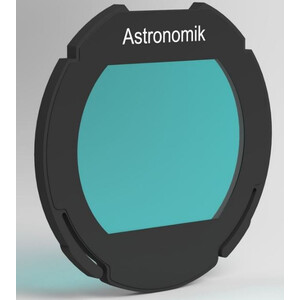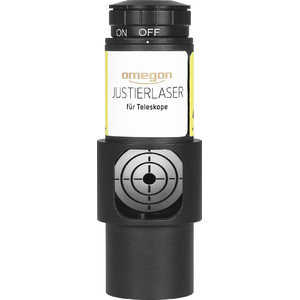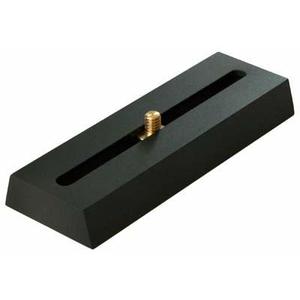Tyvärr har den här beskrivningen ännu inte översatts till svenska, så du hittar en engelsk artikelbeskrivning här.
Astronomik H-alpha 12nm Filter
The Astronomik H-alpha filter is a narrow band filter for CCD photography. The filter lets the H-alpha light of emission nebulae pass and blocks nearly the whole remainder of the spectrum where the CCD is sensitive.
We have re-desgined all of our photographic filters. Since the end of 2008 we are shipping our new "Halo-Free" filters. read more...
The full width at half-maximum (FWHM) of 12nm is optimized for the use with common CCD cameras and allows the use of very fast optics. It should be noted that the filter has a transmission of up to 99%.
Another advantage of the 12nm filters is the availability of guiding stars for cameras with a built-in-autoguider (SBIG). If you use a very strong filter like our 6nm filter you often won’t find a usable guidestar.
The range of application extends from 1:2.8 to 1:15. Transmission losses and chromatic distortions, which arise with other filters, only occur with Astronomik filters when extremely bright aperture ratios of 1:2 and more come into play.
Main use
The Astronomik H-alpha-CCD (12nm version) increases the contrast between objects, in this case between the H-alpha emission line and the skyglow background. Our Astronomik H-alpha-CCD (12nm version) completely suppresses the emission lines of artificial lighting (mercury (Hg) and sodium (Na)) and skyglow.
Please note: In principle, all camera lenses can be used with the Clip-Filter - i.e. Canon EF lenses or camera lenses from other third party manufacturers such as Sigma, Tamron, Tokina, Walimex etc. However, the use of clip-filters with Canon EF-S lenses is NOT possible!
A bit of help with your selection:
- As a first filter, we recommend the Astronomik CLS filter. This filter suppresses artificial light pollution and natural airglow. By using this filter you get a dark-sky background and can therefore use much longer exposure times to make fainter objects visible. The filter is optimised in such a way that objects are reproduced in their natural colours. Important: the simple CLS filter has no built-in IR-blocking. Therefore you will need the CLS-CCD filter for an astro-modified camera!
- A good choice for working in locations with really heavy light pollution is the Astronomik UHC filter. The transmission curve of this filter only allows the light of the H-beta, OIII, H-alpha and SII lines to pass through. The background suppression is significantly stronger than with the CLS, however this filter works only for gas nebulae! Star clusters and galaxies are largely filtered out.
- For a more in-depth introduction to astrophotography, we recommend the OIII, H-alpha and SII emission lines filters, available with full width at half maximum of 6nm or 12nm. With these filters you can create detailed images of faint objects even from locations with extreme light pollution and a full Moon high above in the sky. Images in these narrow emission lines are not naturally coloured.
- For the owners of astro-modified cameras we offer the Astronomik OWB filter: OWB stands for "original white balance". The filter corrects the displaced colour reproduction of a converted camera so that it can also be used for normal every-day photography, without having to revise every image on the computer.






